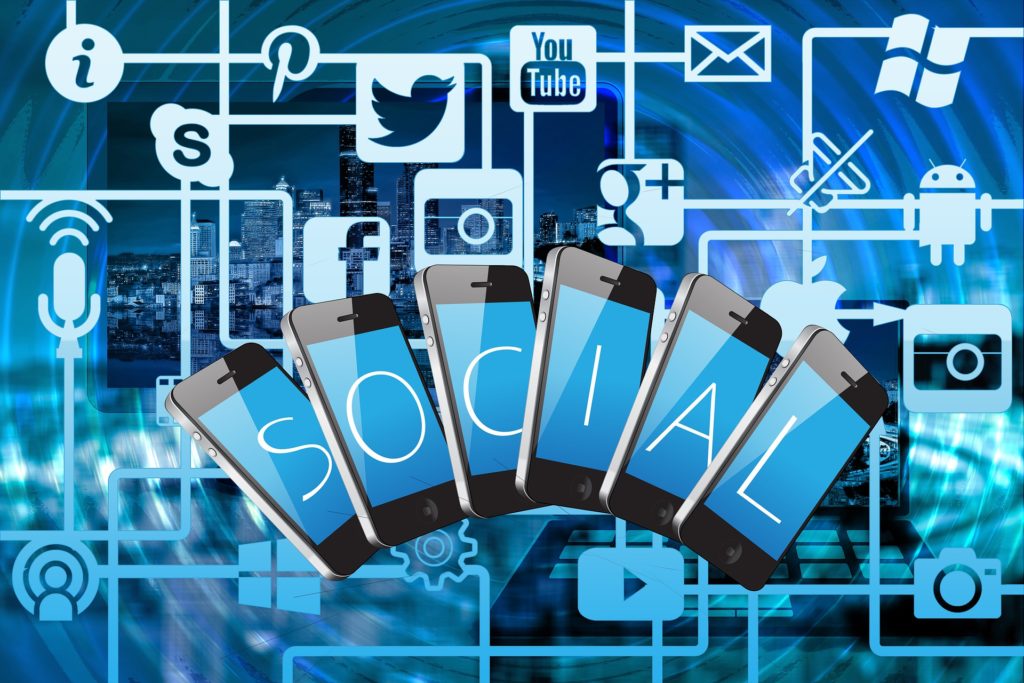- Calls to this hotline are currently being directed to Within Health or Eating Disorder Solutions
- Representatives are standing by 24/7 to help answer your questions
- All calls are confidential and HIPAA compliant
- There is no obligation or cost to call
- Eating Disorder Hope does not receive any commissions or fees dependent upon which provider you select
- Additional treatment providers are located on our directory or samhsa.gov
Does the Social Media App “TikTok” Increase Risk for Eating Disorders?

Quarantine has brought about many creative ways to cope, and many of these involve technology and social media apps. Enter “TikTok,” a new video app that you have undoubtedly seen fill your feed with funny videos and new dances.
We are deep enough into the age of social media at this point to have an awareness of its potential pitfalls.
One study detailed, “it is a highly visual environment in which appearance ideals and the pursuit of thinness are promoted. The interactive nature…provides boundless opportunities for appearance comparisons and appearance-related interactions with peers… (and) appears to contribute to increases in disordered eating [1].”
An important question is, with more than 800 million users, 41% of which are between the ages of 16 and 24, is TikTok another app that poses a risk for contributing to an eating disorder [2]?
Body Dissatisfaction & Social Media
As mentioned above, social media apps have been around long enough for us to gain an experiential understanding of how they impact an individual’s self-view and worldview. They have also been around long enough for scientists to analyze this impact from a research perspective.
One study looked at how media impacts body dissatisfaction found that “body image was significantly more negative after viewing thin media images than after viewing images of either average size models, plus size models or inanimate objects. “
Social media encourages and normalizes social comparison. One receives “likes” based on their post or image and, to receive that social validation, will attempt to adjust the image or themselves.
Social Media Literacy
An important factor related to how social media can impact disorder thoughts and behaviors involves “social media literacy.” Media literacy is an individual’s ability to access and critically evaluate media. Therefore, social media literacy is the ability to do so with social media content.
For example, recognizing that most images on Instagram are “filtered” with their coloring adjusted to make the image appear more desirable. Additionally, recognizing that most images posted by advertisers or celebrities are photoshopped.
Research indicates that those people that are aware of the dangers social media can have on self-image, as well as having an awareness of the modification and “highlight reel” aspects of social media, are less likely to be negatively impacted.
Essentially, social media literacy acts as a barrier to the potential negative body dissatisfaction, disordered thoughts, behaviors, and eating disorder risks that media can bring about [1].
So, What About TikTok?
There are a few reasons the above results indicate TikTok may create a similar risk to eating disorders and body dissatisfaction as Instagram or Facebook. One is the average age of individuals that are highly impacted by media images.

TikTok essentially also allows individuals to post whatever content they want, meaning that posts regarding diet, weight loss, and pro-eating disorder behaviors can be shared. “Although TikTok says it uses a combination of techniques to remove content, campaigners say the app is slow in dealing with it [2].”
Additionally, the TikTok algorithm means that, once an individual views a specific type of content, it will appear as suggested content for them moving forward. As such, they don’t actively have to search for content. An individual may “like” a post that is tagged as “weight loss” and their suggested content feed will soon be filled with similar posts.
One campaigner told BBC News, “the lack of transparency around how content is fed to different people through the app makes TikTok especially threatening, as none of us can be sure what content we will see and whether it will be safe for our mental wellbeing [2].”
Social media apps, TikTok included, are aware of these dangers and have created the ability for users to ask to see less of a certain type of content. Additionally, anything reported as “promoting or glorifying eating disorders will be removed” from the platform [2].”
Even so, TikTok hasn’t been, and will not be, the only app that poses potential eating disorder risks.
As challenging as it can be for someone vulnerable to disordered beliefs or behaviors, the best thing one can do is either not engage in social media or curate one’s content strictly to ensure that no triggering posts come to their feed.
While this is not an ideal solution, it is the best control a person has over the situation as we wait for social media app developers to improve the technology that removes this content altogether.
Resources:
[1] McLean, S. A. et al. (2017). A pilot evaluation of social media literacy intervention to reduce risk factors for eating disorders. International Journal of Eating Disorders, 50, 847-851. [2] Lantos, E. (2020). TikTok: Fears videos may ‘trigger eating disorders.” Retrieved from https://www.bbc.com/news/uk-wales-52919914About the Author:

As a freelance writer for Eating Disorder Hope and Addiction Hope and a mentor with MentorConnect, Margot is a passionate eating disorder advocate, committed to de-stigmatizing these illnesses while showing support for those struggling through mentoring, writing, and volunteering. Margot has a Master’s of Science in Clinical Mental Health Counseling from Johns Hopkins University.
The opinions and views of our guest contributors are shared to provide a broad perspective on eating disorders. These are not necessarily the views of Eating Disorder Hope, but an effort to offer a discussion of various issues by different concerned individuals.
We at Eating Disorder Hope understand that eating disorders result from a combination of environmental and genetic factors. If you or a loved one are suffering from an eating disorder, please know that there is hope for you, and seek immediate professional help.
Published August 11, 2020, on EatingDisorderHope.com
Reviewed & Approved on August 11, 2020, by Jacquelyn Ekern MS, LPC
